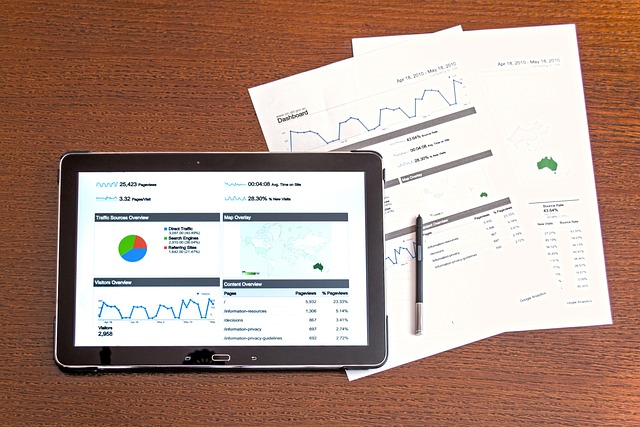AI Guest Occupancy Forecasting leverages machine learning models, integrating historical data, trends, seasonality, and local events, to predict hotel room occupancy rates. These models adapt and improve over time through iterative evaluation, ensuring accuracy and alignment with industry dynamics. Best practices involve advanced algorithms like deep neural networks and ensemble methods, combined with real-time data, social media sentiment analysis, and NLP for precise demand forecasts. Regular model updates enable effective resource allocation, tailored marketing strategies, and enhanced guest experiences in the competitive hospitality industry.
“Unleash the power of AI to revolutionize hospitality with advanced guest occupancy forecasting. This comprehensive guide delves into the development of machine learning (ML) models, offering a detailed journey from understanding AI’s role in guest predictions to best practices and future trends.
Learn how ML algorithms can optimize room allocation, enhance revenue management, and improve overall guest experience through accurate, data-driven insights. Discover the steps to build effective models, leveraging historical data and advanced techniques for precise AI guest occupancy forecasting.”
- Understanding AI Guest Occupancy Forecasting: A Comprehensive Overview
- The Process of Developing an Effective ML Model for Hospitality
- Best Practices and Future Trends in AI-Powered Guest Occupancy Prediction
Understanding AI Guest Occupancy Forecasting: A Comprehensive Overview

AI Guest Occupancy Forecasting is a cutting-edge application of machine learning models designed to predict hotel room occupancy rates. By analyzing historical data, current trends, and external factors such as seasonality and local events, these models can offer accurate projections that aid in strategic decision-making. This includes optimizing pricing strategies, managing inventory efficiently, and ensuring maximum revenue.
Comprehensive AI guest occupancy forecasting systems integrate diverse datasets – from past bookings to social media sentiment analysis – to create dynamic predictive models. These models continuously learn and adapt, improving accuracy over time. Such advanced analytics enable hospitality businesses to stay agile, anticipate demand fluctuations, and deliver personalized experiences that enhance guest satisfaction and loyalty.
The Process of Developing an Effective ML Model for Hospitality

Developing an effective Machine Learning (ML) model for hospitality, particularly in AI guest occupancy forecasting, involves a strategic process. It begins with defining clear objectives and understanding the unique needs of the hospitality business. This includes analyzing historical data to identify patterns in guest behavior and preferences, which are crucial for accurate predictions. By examining factors like previous bookings, seasonal trends, and special events, ML models can learn to forecast occupancy rates with impressive accuracy.
The next step is selecting the appropriate ML algorithm suited for time-series data analysis, as hospitality occupancy often follows temporal patterns. Training the model on prepared datasets allows it to learn from historical data and make informed predictions about future guest arrivals. Regular evaluation and refinement are essential; models must be tested against new, unseen data to ensure their effectiveness and adaptability. This iterative process ensures the ML model stays aligned with evolving industry dynamics and delivers valuable insights for optimal hospitality management.
Best Practices and Future Trends in AI-Powered Guest Occupancy Prediction

In the realm of AI-powered guest occupancy prediction, best practices are continually evolving to stay ahead in the competitive hospitality industry. Accurate forecasting models, built on robust datasets and advanced machine learning techniques like deep neural networks and ensemble methods, are becoming standards. These models not only predict demand but also account for complex, dynamic factors such as seasonal trends, economic indicators, and consumer behavior shifts. Regular model updates, incorporating new data sources and refining algorithms, ensure predictions remain precise and relevant.
Looking ahead, the future of AI guest occupancy forecasting is promising with emerging trends setting new benchmarks. Incorporating real-time data streams from various online platforms, social media sentiment analysis, and external factors like weather patterns can significantly enhance prediction accuracy. Additionally, the integration of natural language processing (NLP) for sentiment analysis in reviews and comments offers deeper insights into guest preferences and expectations. These innovations promise to revolutionize hospitality management by enabling more effective resource allocation, improved marketing strategies, and enhanced overall guest experiences.
AI guest occupancy forecasting has revolutionized hospitality by providing accurate predictions, enhancing operational efficiency, and maximizing revenue. Through a structured development process involving data collection, feature engineering, model training, and deployment, businesses can create effective machine learning models tailored to their unique needs. By adopting best practices and staying informed about emerging trends in AI-powered guest occupancy prediction, hotels can leverage these advanced tools to maintain a competitive edge in today’s digital era.
